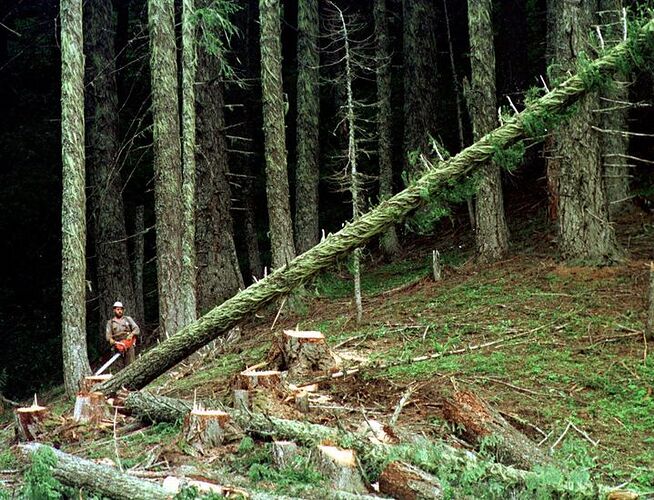The U.S. Forest Service, an agency with a long history of prioritizing timber production, has taken a first step toward protecting the nation’s most ancient forests from logging.
The agency on Tuesday announced a proposal to amend management plans for all 128 national forests and grasslands across the country to better conserve carbon-rich “old-growth” forests, typically defined as those at least 150 years old and largely undisturbed by human activity.
“Old-growth forests are a vital part of our ecosystems and a special cultural resource. This proposed nationwide forest plan amendment — the first in the agency’s history — is an important step in conserving these national treasures,” Agriculture Secretary Tom Vilsack said in a statement. “Climate change is presenting new threats like historic droughts and catastrophic wildfire. This clear direction will help our old-growth forests thrive across our shared landscape.”
The proposal, if finalized, would restrict commercial logging across the approximately 25 million acres of old-growth timber that the Forest Service manages, but stops short of limiting harvest in “mature” forests, those that are decades old but haven’t reached the old-growth stage.
The move comes after months of the Forest Service seemingly dragging its feet on the issue, as HuffPost previously reported.
A logger cuts down a large fir tree in the Umpqua National Forest, near Oakridge, Oregon.
AP Photo/Don Ryan, File
The Climate Forests Campaign, a coalition of more than 120 environmental groups, applauded Tuesday’s announcement as “an important first step” but called on the Forest Service to also take action to safeguard mature trees. Together, mature and old-growth forests form a key natural climate solution, sequestering a massive amount of planet-warming greenhouse gasses.
“Our ancient forests are some of the most powerful resources we have for taking on the climate crisis and preserving ecosystems,” Alex Craven, forests campaign manager at the Sierra Club, said in a statement. “We are pleased to see that the Biden administration continues to embrace forest conservation as the critical opportunity that it is. This amendment is a meaningful step towards averting climate catastrophe, safeguarding vulnerable ecosystems, and fulfilling President Biden’s commitment to preserve old-growth and mature trees across federal lands.”
The proposal stems from an executive order that President Joe Biden signed in April 2021 that tasked the nation’s two largest federal land managers, the Forest Service and the Bureau of Land Management, with first inventorying existing old-growth and mature forests and then crafting policies to better conserve and restore them.
Earlier this year, critics accused the Forest Service of not taking the executive order seriously and resisting abandoning what many view as an entrenched, logging-centric mindset within the agency.
Jim Furnish, a former deputy chief of the Forest Service in the Clinton administration, told HuffPost he is “underwhelmed” by Tuesday’s action.
“The FS has squandered the opportunity to respond meaningfully to [Biden’s executive order] by limiting the scope to old growth only, with no provisions — none — for mature trees and forests,” he said in an email. “This small step forward is certainly better than nothing, but a far cry from the big leap needed to respond to our climate change crises. The FS logged and liquidated most of the old growth with tragic consequences and has an obligation to not only protect what remains but restore millions of acres by allowing mature forests to grow. This proposal fails entirely in that regard.”
Steve Pedery, conservation director at environmental organization Oregon Wild, said the proposal is better than he was expecting.
“It is not the permanent mature and old-growth forest protection rule we are ultimately seeking, but if someone offers me a national ban on old-growth logging and a path towards a broader policy that includes mature, I’ll take it,” he said in an email.
But Pedery is concerned that a future administration could stymie the Biden administration effort.
“Development and implementation will almost certainly spill over into 2025 and beyond, so how effective it will ultimately be depends on who is in the White House,” he said. “That is why we have advocated for an administrative rule, like the Roadless Area Conservation Rule, because it would be much harder for future administrations to roll back or modify.”
Asked about the durability of the agency’s proposal, Vilsack told The Associated Press that it would be “a serious mistake for the country to take a step backwards now that we’ve taken significant steps forward.”
